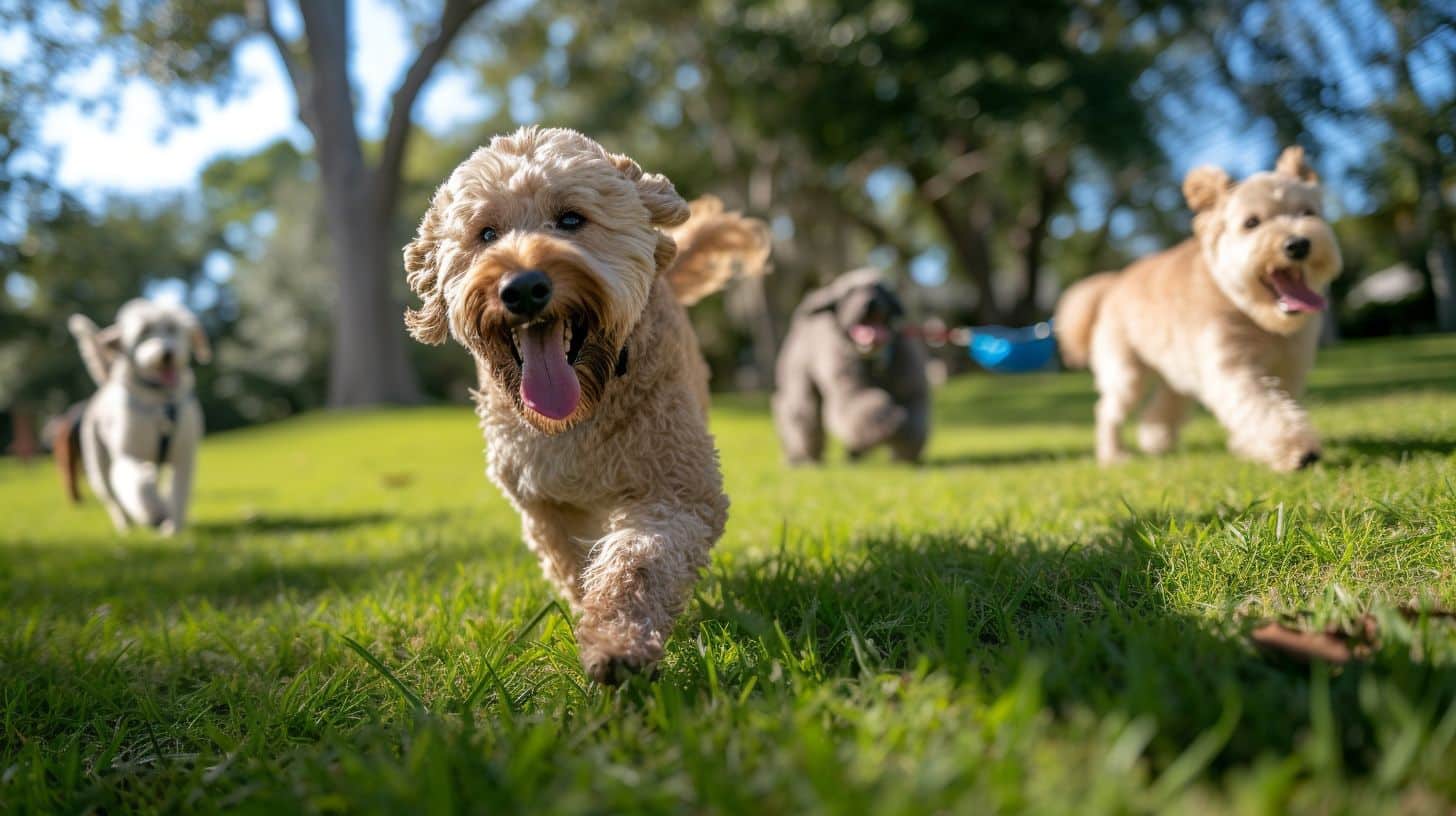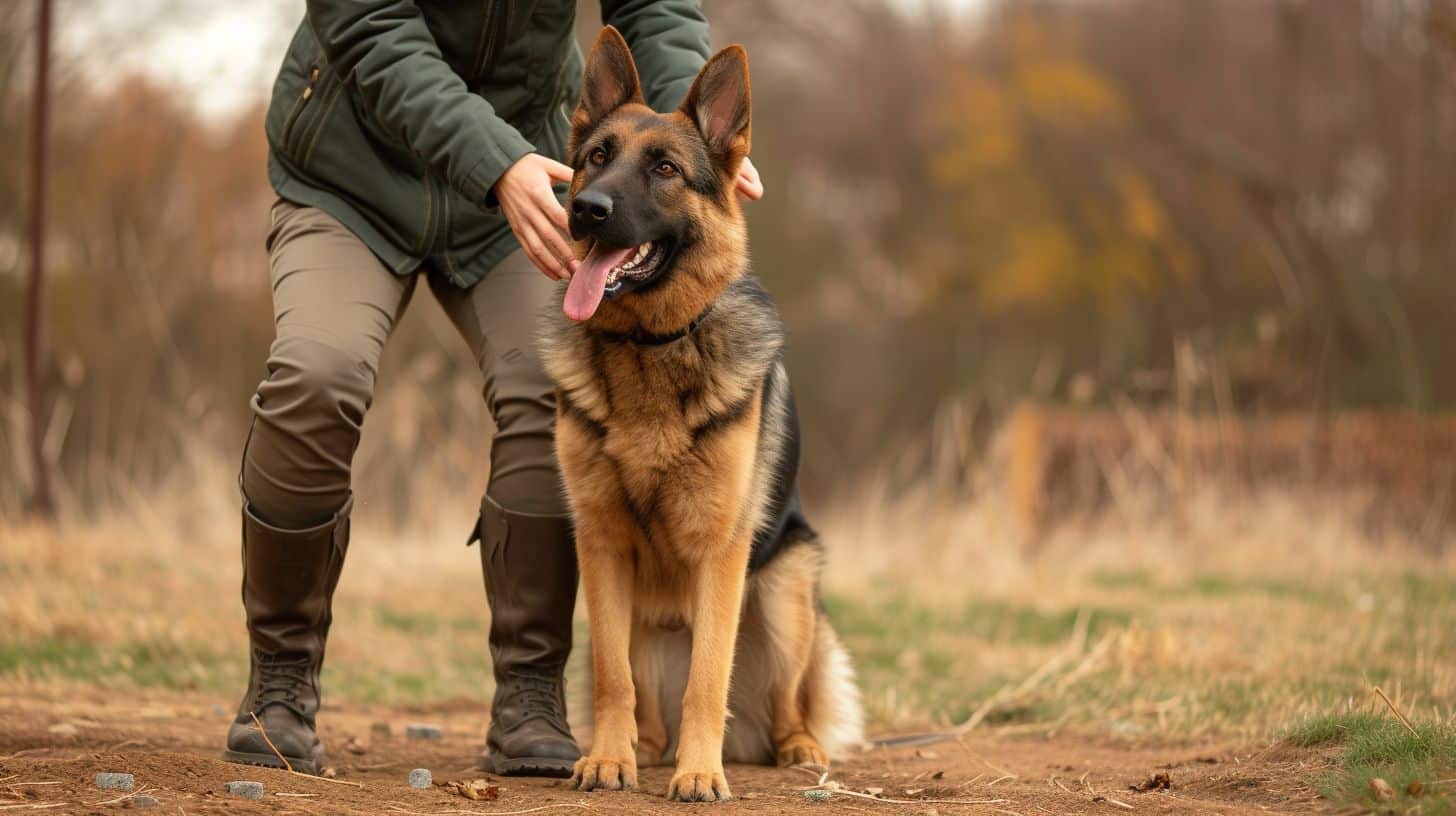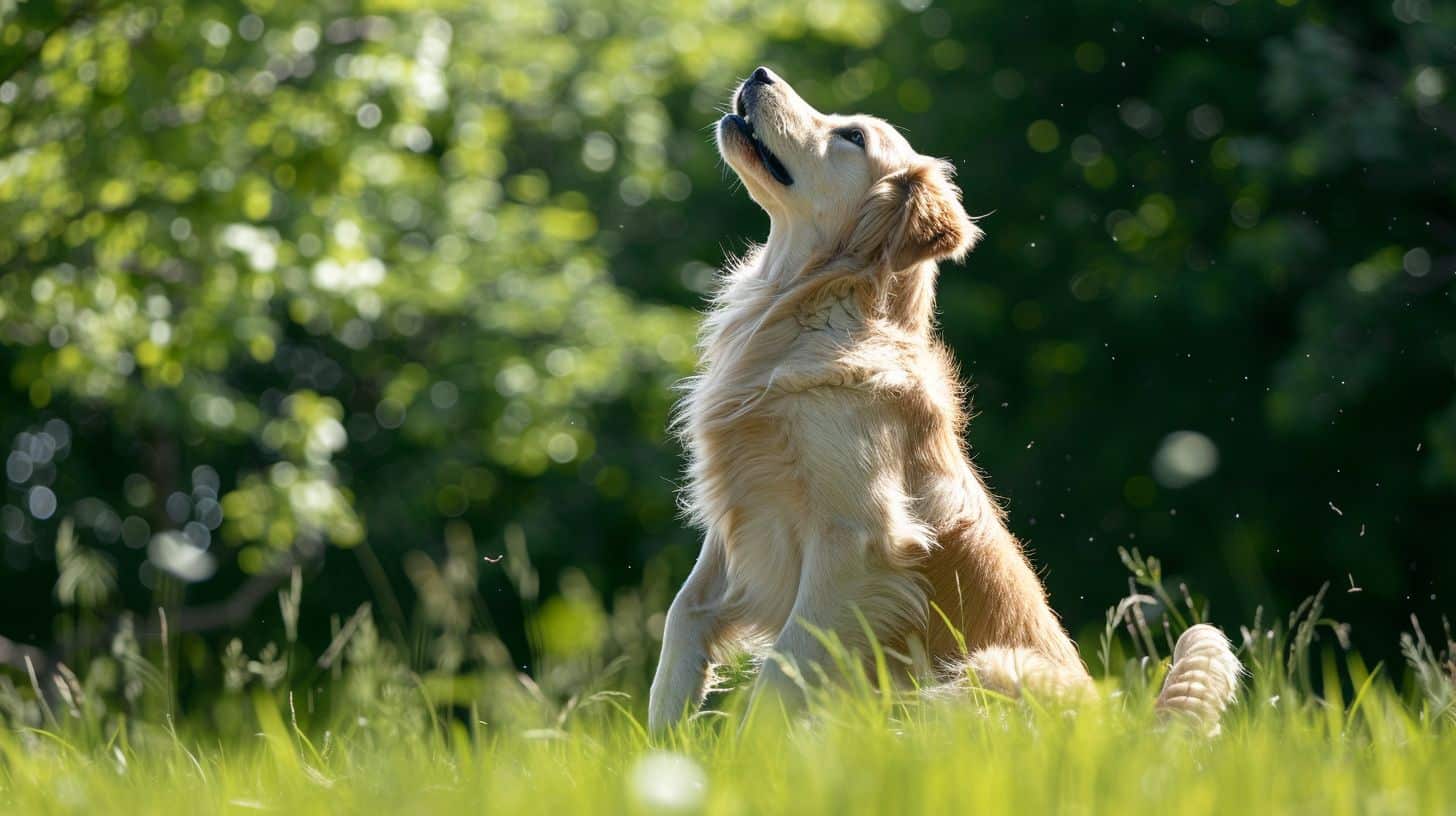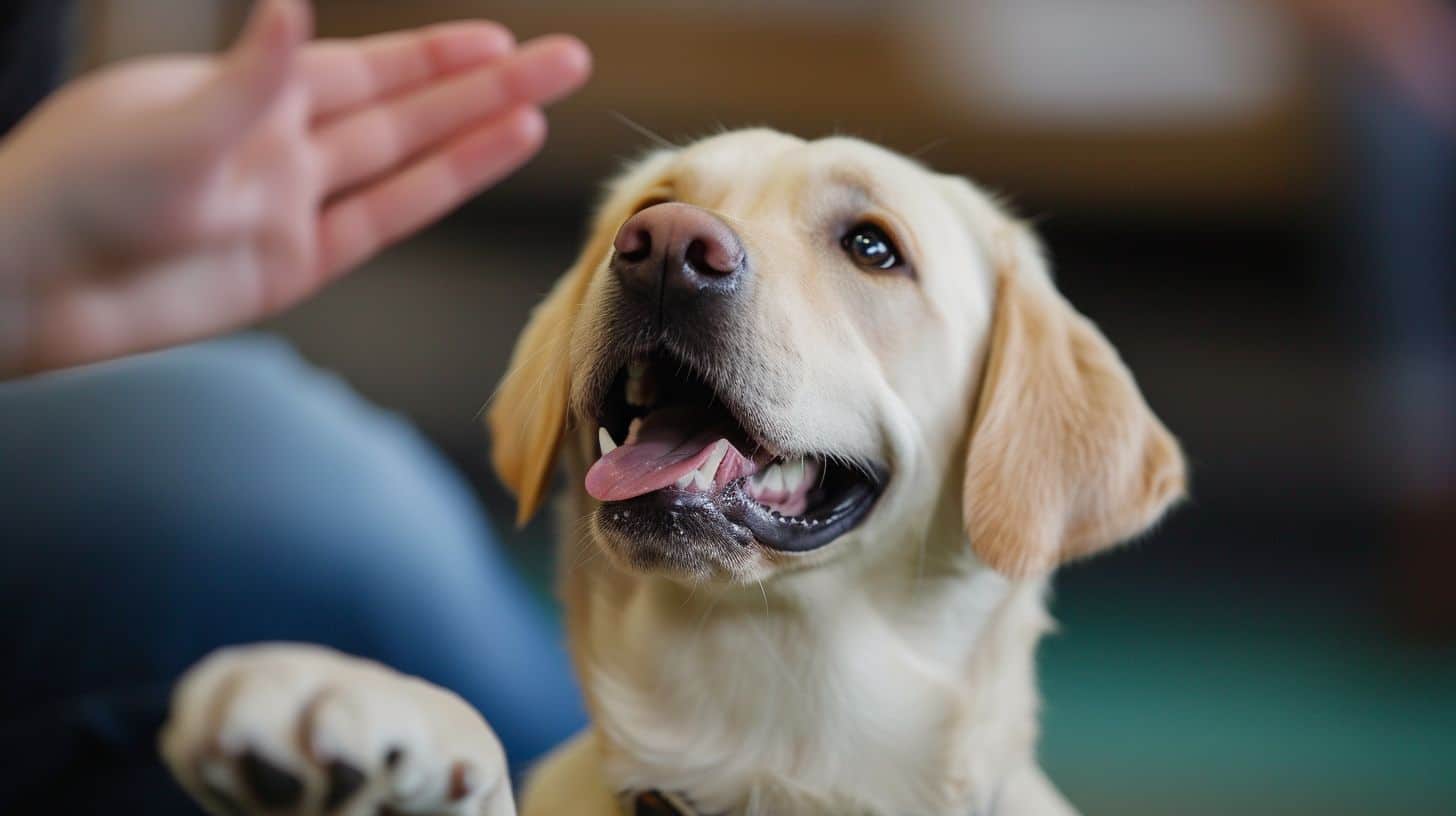Blog The Science Of Dog Training: Understanding Canine Learning And Behavior
At Very Important Paws, we know that grasping the nuances of canine behavior and learning are the keys to a happy puppy. Like humans, dogs are complex creatures with ways of interpreting the world.
They thrive on operant conditioning – think clicker training or tasty food or treats for a job well done – reinforcing their good behaviors. And when it comes to classical conditioning, our furry friends are pros; pair the sound of a leash with walk time often enough, and watch your pup get excited by just the jingle.
Our approach taps into these science-backed methods to mold desired behaviors in dogs while steering them away from those pesky, unwanted ones. It’s fascinating how canines learn through association; they connect actions with outcomes in ways that shape their habits over time.
This deep understanding guides us at Very Important Paws as we train dogs using positive reinforcement that sets them up for success both during their stay and when they return home to you in Palm Beach.
Contact Very Important Paws today in Palm Beach for all your dog boarding, hotel, daycare, grooming, and training needs.
The Basics of Learning Theory for Dogs

Dogs learn through association, operant conditioning, and context-based learning, essential concepts for understanding canine behavior and training dogs. These theories form the foundation of effective obedience training methods that can help dog owners shape their pet’s behavior.
Association Learning

At Very Important Paws, we see firsthand how our furry guests learn new skills through association learning. This powerful method taps into how dogs naturally connect one thing with another.
For example, if a pup hears a treat jar rattle every time they sit on command, they’ll associate sitting with getting a tasty reward. They learn that specific actions lead to positive outcomes or sometimes avoid negative ones.
We use associative learning in all our training programs to encourage desired behaviors and gently discourage undesirable ones without causing fear or distress for many dogs. Watching them make these connections and grow during their stay with us is remarkable! Now, let’s explore operant conditioning and its role in further shaping canine behavior.
Operant Conditioning

Operant conditioning is a powerful tool to shape our canine companions’ behavior. It relies on the idea that dogs will repeat actions that lead to good things and avoid behaviors that result in unpleasant outcomes.
For example, if your dog sits when asked and gets a treat for it, they’re more likely to sit the next time you ask. This positive reinforcement encourages desirable behavior and strengthens your bond with your furry friend.
We also understand that negative reinforcement might sometimes be necessary while teaching dogs new tricks or manners. If a dog jumps up and the jumping no longer brings them attention or results in a brief time-out, they’ll learn that keeping all four paws on the ground is better for getting love from their humans.
At Very Important Paws, we use these training techniques wisely to guide our guests toward becoming well-mannered pets without causing other dogs any fear or stress. Now, let’s turn our attention to context-based learning, where this operant conditioning comes into play amid various environments and situations.
Context-based Learning

Building on the foundation of operant conditioning, we move into the dynamic world of context-based learning. This approach takes dog training a step further by considering the environment in which a dog learns and behaves.
It’s all about creating associations that make sense to our furry friends within specific contexts, whether at home or during their stay at Very Important Paws.
We use real-life scenarios that your puppy may encounter every day or while they’re enjoying their time with us to teach them desirable behaviors in those settings. Think of it as tailored education where dogs can transfer skills learned in one setting to another—like listening attentively amid the fun distractions they’ll find at our Palm Beach dog hotel resort.
Understanding context is key because dogs don’t just learn commands; they learn when and where these commands apply, making them well-behaved no matter where life takes them.
Obedience Training
After understanding context-based learning and the basics of learning theory for dogs, it’s essential to delve into obedience training. Obedience training is crucial in shaping a dog’s behavior and building a solid relationship between pets and their owners.
Using positive reinforcement and specialized training methods, such as treats or praise, can help pet parents effectively teach their dogs obedience commands. Implementing consistent training techniques based on scientific principles fosters desirable behaviors while minimizing unwanted ones.
Dogs learn best when they associate specific actions with rewards or consequences, making obedience training for many owners an essential aspect of canine education. By incorporating operant conditioning and social learning into obedience training sessions, dog owners can encourage good behavior in their pets while strengthening the human-canine bond.
The Science Behind Dog Training

Understanding cognitive learning theories and developing effective training methods can help dog owners understand their canine companions better. Dive into the science behind dog training to unlock a deeper understanding of your furry friend’s behavior and how you can improve their training success.
Cognitive Learning Theories
Cognitive learning theories explore how dogs process, store, and retrieve information to shape their behaviors. These theories emphasize the role of mental processes in understanding canine behavior, including memory, problem-solving, and decision-making.
Research shows that dogs exhibit cognitive abilities such as spatial reasoning, concept formation, and social learning, which play a crucial role in their training and behavior modification.
Understanding these cognitive aspects can help trainers tailor teaching methods to align with a dog’s natural thought processes for more effective and lasting results.
Applying cognitive learning theories in dog training involves recognizing each dog’s unique cognitive strengths and weaknesses when designing training programs. By acknowledging the individual differences in cognitive abilities among dogs, dog trainers can create personalized approaches that cater to each dog’s specific needs for optimal learning outcomes.
Developing effective training methods
To develop effective training methods for dogs, we need to consider the following key strategies:
- Use positive reinforcement techniques to reward desired behaviors, such as treats, praise, or playtime.
- Consistently communicate clearly and consistently with your dog through verbal cues and body language to help them understand your expectations.
- Implement consistent training schedules to reinforce good behaviors and slowly eliminate undesired ones.
- Consider seeking professional assistance from reputable dog trainers using science-based, positive reinforcement methods.
- Tailor the training approach based on individual dog personalities and learning styles to ensure optimal results.
- Employ patience and consistency throughout the training process to instill lasting behavior changes in your canine companion.
- Use environmental enrichment and mental stimulation to motivate your dog during training sessions.
- Incorporate regular exercise into your dog’s routine, as physical activity can positively impact learning and behavior modification efforts.
The role of behavior in training and the success of positive reinforcement
Dogs control their behavior and can be significantly influenced by their owners. Understanding the science behind dog training is crucial for a successful training program and behavior modification.
Modern dog training methods are based on scientific principles and positive reinforcement, allowing pet parents to teach dogs desirable behaviors while minimizing undesired ones effectively.
Positive reinforcement schools have shown that dogs perform better at tasks than aversive training schools. Dogs learn through association, making learning theory essential for pet parents who want to understand how their pets think and behave.
The operant and classical conditioning principles are fundamental to learning theory for humans and dogs alike, providing a solid foundation for effective dog training methods rooted in behavioral science.
Conclusion

Understanding the science of dog training is vital for successful dog behavior modification. Dogs learn through association, making learning theory essential for pet parents. Scientific methods and studies on dog training offer actionable guidance to pet owners.
Modern dog training methods are based on scientific principles and positive reinforcement, ensuring a balanced and effective approach to canine learning and behavior.
FAQs
1. How does science help us understand dog training?
Science sheds light on canine learning and behavior, focusing on how dogs respond to training methods like classical and operant conditioning and understanding dog body language.
2. What is positive punishment and negative punishment in dog training?
Positive punishment involves adding an unpleasant stimulus to the dog to reduce unwanted behavior, while negative punishment means taking away something the dog enjoys to discourage undesired behaviors.
3. Can all dogs learn the same way through training?
No, each dog has unique traits; however, most dogs can learn effectively using consistent methodology considering their behavior, motivations, and experiences.
4. What’s a common misconception about canine behavior dogs regarding prong collars and shock collars?
Some believe tools like prongs or shock collars are necessary for training; however, these can lead to fear or aggression rather than secure attachment between the animal, the handler, and the animal.
5. Why is Thorndike’s Law important in understanding how animals learn?
Thorndike’s Law of Effect explains that actions followed by positive outcomes tend to be repeated—a principle central to effective dog training techniques to reinforce the desired behavior and behaviors.
6. Do researchers use different methodologies when studying canine learning than other animal research?
Yes! Researchers apply various methodologies explicitly tailored for studying canines—like analyzing their responses under controlled conditions—to avoid misleading results due to varied covariates like sociability or prey drive.
Contact Very Important Paws today in Palm Beach for all your dog boarding, hotel, daycare, grooming, and training needs.

